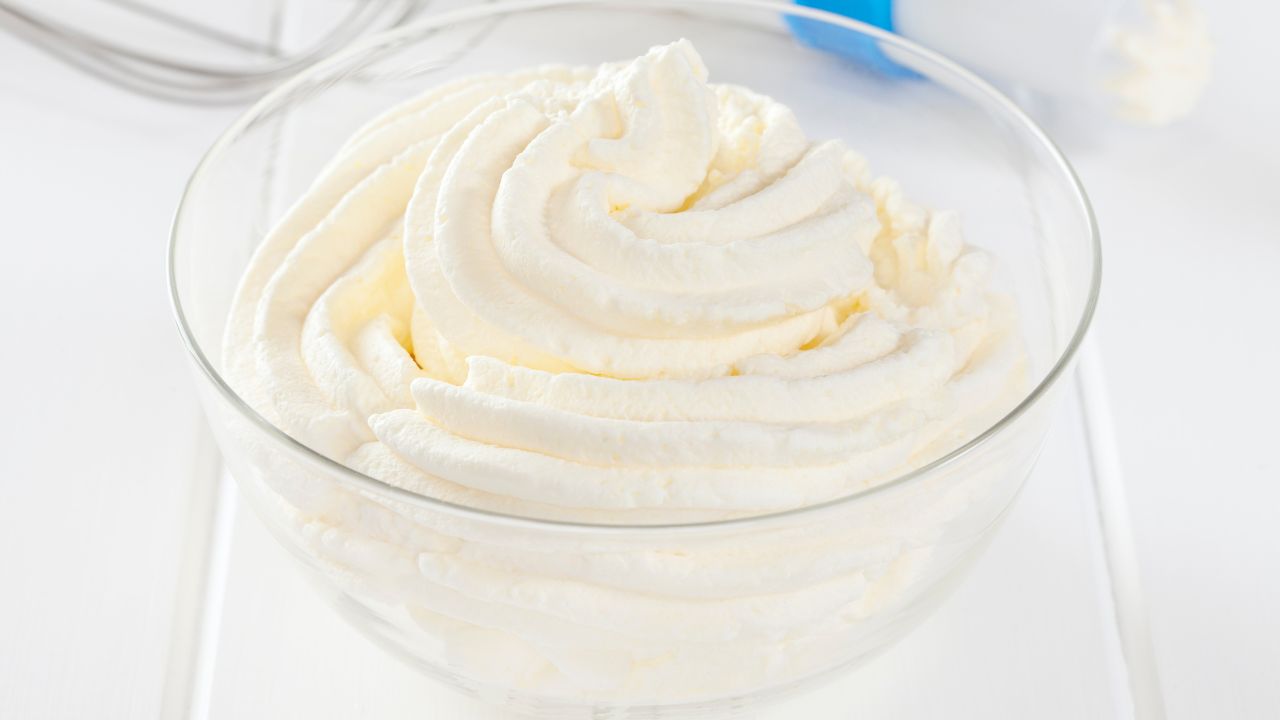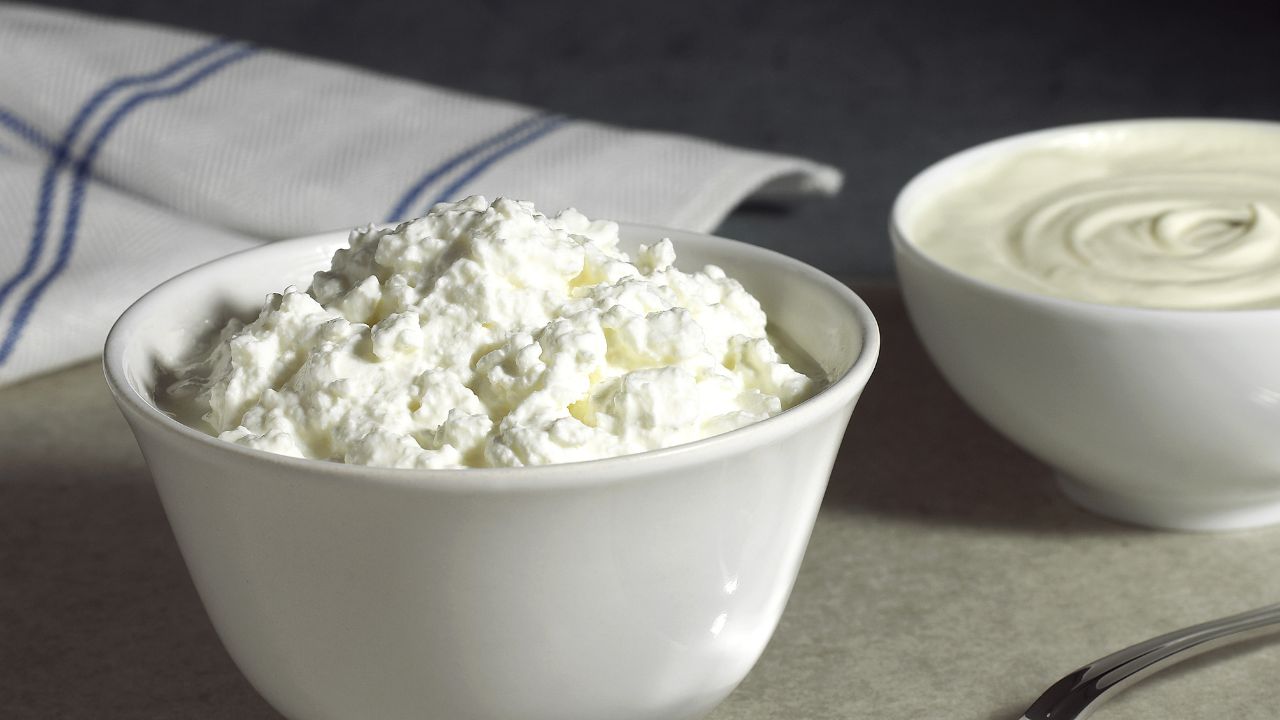Heavy cream is a versatile ingredient that can be used in all sorts of recipes, from pasta to coffee to cake.
However, you’ll typically only need a small amount of cream for a recipe, and chances are you’ll still have some leftover heavy cream by the time its expiration date approaches.
But throwing out excess cream is a big waste – so can you freeze heavy cream to make it last longer?
Don’t worry, because we’ve got all the answers right here! In this handy guide, we’ll take a look at whether or not heavy cream is freezable, along with how to do it the right way.

Is Heavy Cream Freezable?
So first things first – is heavy cream actually freezable in the first place? Well, yes, it is – at least, as long as you follow the right steps first.
Freezing cream the wrong way can cause the water and fat to separate, leaving it with a clumpy, grainy texture. It also affects the taste when it thaws back out, making it unsuitable for cooking or eating.
This can be even worse for heavy cream in particular, as the higher fat content in heavy cream means that there is more fat to separate from the water content.
To freeze cream properly, you need to follow a certain process to prevent these issues from occurring. As long as you follow these steps, you shouldn’t have any issues with freezing your heavy cream.
So while heavy cream is technically freezable, you need to make sure you’re doing it the right way in order to keep the cream in its best condition – both while frozen and thawed.
Okay – now that we’ve established that heavy cream can be frozen, let’s take a closer look at how to do it!
How To Freeze Heavy Cream Properly
When you want to freeze heavy cream, you need to follow a certain process. Depending on how much leftover cream you have, there are a few different ways that you can go about this.
If you only have a small amount of cream left, or if you want to freeze it in small quantities, then the easiest way to go about it is using an ice cube tray.
Start out by measuring how much each cube in the tray is; this is typically around two tablespoons, but you should use a measuring spoon just to make sure.
Next, you can fill the cubes with your leftover heavy cream. Put them in the freezer for two hours to flash freeze them (or until the cream is fully frozen). Then, transfer the cubes to a freezable bag and squeeze out the excess air, before adding them back to the freezer.
For larger quantities of cream, such as a full or near-full carton of heavy cream, you can simply freeze the whole carton. If you’re doing this, however, you still need to take steps to prepare the cream for freezing.
If there isn’t already some heavy cream missing from the carton, you should empty out a small amount of the cream before freezing; this is because the cream will expand as it’s freezing, which can cause the carton to explode if there isn’t enough room for this expansion.
This isn’t just a lot of mess and waste to deal with, but it will also make the cream unsuitable for eating as the exposed cream is liable to issues like freezer burn.
You can also freeze whipped heavy cream for later use. This can be done in pretty much the same way as unwhipped cream – simply transfer the cream to a freezer-safe container, and remove as much excess air as possible to maintain the cream’s quality while it’s freezing.
If you want to freeze it in smaller amounts, you can pipe out the cream into small rounds or into an ice cube tray. Then, the same way as with small amounts of heavy cream, freeze them for two hours before transferring them to a freezable bag and removing the excess air.
After freezing your heavy cream, you should use it within three to four months. This will keep it safe and suitable to eat, without it encountering issues such as freezer burn or separation.
It’s useful to label the container so you can keep track of how long you have left to use it.

How To Thaw Out Heavy Cream
Freezing cream is one thing, but defrosting it is another, and you also need to follow the right steps here in order to keep it in good condition.
For large amounts of heavy cream in the carton, thawing takes a while. This is especially true for a full carton, as larger quantities of cream take longer to thaw. Transfer the cream to the fridge, and leave it to fully defrost for 1-2 days.
The cream will separate a bit as it defrosts, but this is fortunately easy to fix. Simply shake the cream thoroughly to ensure that all the fat and water are completely mixed together and the cream regains its original smooth texture.
If there are still some lumps after shaking, add a small amount of powdered sugar; this helps it bind properly again.
Whipped cream and small quantities of heavy cream are far easier to thaw; all you need to do is let it defrost in the freezer for 15 minutes before using it.
You can also add it directly into hot recipes like cooked meals or hot drinks like coffee, tea, and hot chocolate – no need for thawing!
This is why using an ice cube tray is so convenient for freezing small portions of heavy cream.
Because they are pre-measured and can be added right into a recipe, it’s really easy to use your frozen cream without the hassle of thawing it out.
Issues With Freezing Cream (And How To Avoid Them)
As we mentioned earlier, there are some issues with freezing cream. The two main problems that can arise are freezer burn and separation.
Freezer burn occurs when the cold air freezes the water in the cream. This causes the cream to dry out and affects its taste and texture.
To prevent this from occurring, you need to make sure that you’ve removed as much excess air from the cream’s container as possible before you freeze it.
You can still encounter freezer burn if you leave the cream in the freezer for too long, but the cream should be fine as long as you use it within the 3 month period.
Separation, as the name suggests, is where the water and fat content of the cream become separated. This also has an effect on the cream’s taste and consistency, and is responsible for that grainy, bland effect.
This is why you need to keep the cream sealed, and why smaller amounts of cream need to be flash frozen before they’re put in their container.
You’ll still see some splitting in the thawing process, but shaking the cream will recombine the water and butterfat content, restoring the cream to its original state.
Final Thoughts
Freezing heavy cream (see also ‘13 Heavy Cream Substitutes You Should Know!‘) can be tricky if you don’t know what you’re doing, but by using the tips in this handy guide you can make sure that none of your cream goes to waste.
No matter how much heavy cream you have, by following the right process, you can be sure that your cream will stay in its best condition.
So now all you need to do is put your newfound knowledge into practice, and you can say goodbye to the days of throwing your cream out!
- 15 Traditional Greek Breads - July 31, 2023
- 30 Delicious And Gluten-Free Cookie Recipes - July 29, 2023
- 30 Of The Best European Desserts - July 29, 2023
